Saturday, April 16, 2005
Turk's Cap
Remember the big bush that I trimmed down to the crown?
It's coming back and before long it will be green and bushy.
Here are the before and after photos a week apart.
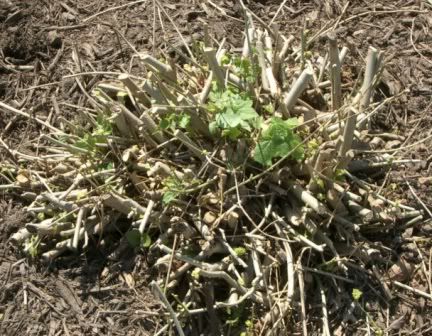
4/9/05
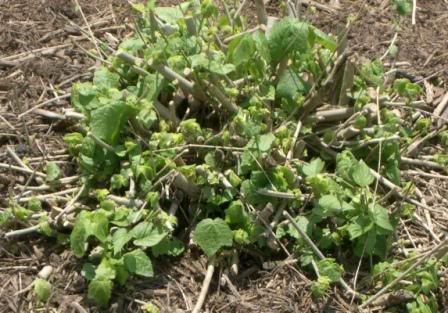
4/16/05
By August the blooms will be out and the hummingbirds will be everywhere.
It's coming back and before long it will be green and bushy.
Here are the before and after photos a week apart.

4/9/05

4/16/05
By August the blooms will be out and the hummingbirds will be everywhere.
Snakes in the garden
I have seen two snakes so far this year in my garden. Both are non-poisonous species.
I saw a Rough Earth Snake (Virginia striatula) also called a Houston Garden Snake today and got a picture of it. This one is about 10" long and eats worms.

When I was digging up the beds a few weeks ago, I unearthed a baby Black Rat Snake. I didn't get a shot of it but here's a picture I found of an adult. As the name implies, these guys eat mice, rats, toads, frogs, birds, etc. We had some trouble with one of these in Alabama with some baby chicks but that is another story. I have seen a big one in my garden before and I think he was after the toads. These get to be 4-5 feet in length and can scare you "real good".

Last year I had an Eastern Hog Nosed snake in one of the flower beds. It is also non-poisonous but it hisses loudly ancd thrashes its tail to intimidate any onlookers. When I touched it with a rake, it rolled over and played dead. It was definitely after the toads.
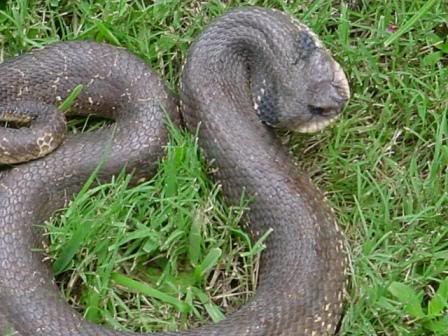
I don't mind these guys too much but living in Texas has made me wary of snakes. I have seen Water Moccasins, (Cottonmouth) and Copperheads here on the Gulf Coast and Western Diamondback Rattlers in South and West Texas. I guess it comes with the territory.
I saw a Rough Earth Snake (Virginia striatula) also called a Houston Garden Snake today and got a picture of it. This one is about 10" long and eats worms.

When I was digging up the beds a few weeks ago, I unearthed a baby Black Rat Snake. I didn't get a shot of it but here's a picture I found of an adult. As the name implies, these guys eat mice, rats, toads, frogs, birds, etc. We had some trouble with one of these in Alabama with some baby chicks but that is another story. I have seen a big one in my garden before and I think he was after the toads. These get to be 4-5 feet in length and can scare you "real good".

Last year I had an Eastern Hog Nosed snake in one of the flower beds. It is also non-poisonous but it hisses loudly ancd thrashes its tail to intimidate any onlookers. When I touched it with a rake, it rolled over and played dead. It was definitely after the toads.

I don't mind these guys too much but living in Texas has made me wary of snakes. I have seen Water Moccasins, (Cottonmouth) and Copperheads here on the Gulf Coast and Western Diamondback Rattlers in South and West Texas. I guess it comes with the territory.
What a difference a week makes
It's been a week since I was out in the garden and I'm amazed by the progress. The morning glory is continuing its climb up the trellis at the entrance to the garden:

The okra and peas have already sprouted.

Okra

Black-eyed peas
The rest of the veggies are off to a great start too.

tomatoes

Squash

Cucumbers

Cantaloupe
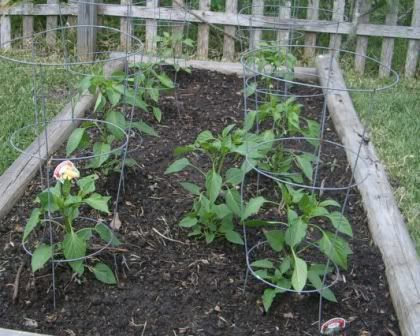
Peppers

The okra and peas have already sprouted.

Okra

Black-eyed peas
The rest of the veggies are off to a great start too.

tomatoes

Squash

Cucumbers

Cantaloupe

Peppers
Saturday, April 09, 2005
Roses
We have been planting antique roses for the past several years and this time of year they really put on a show. They are disease resistant and easy to grow. Many of them bloom year round.
Here are a few examples:
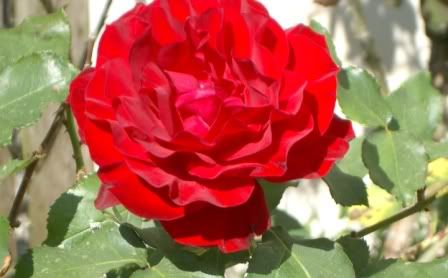


Here are a few examples:



Finished Planting
I finally got out and finished planting the rest of the garden today. It took some time to clean out the last two beds but they looked much better after I was through.
Here is one that is nearly complete:

There are three types of grass that must be dealt with and all are a real pain.
First is the nut grass

It produces nodules underground and send up sprouts and side runners. If you get it on a good day, you can retrieve the nodules - otherwise you get the sprout and the "nut" remains underground until the next time.
I am a master nut grass grower.
My next grass nemesis is what I call centepede grass.
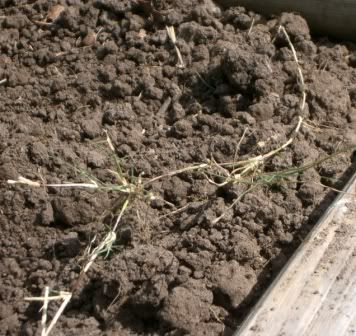
It is a slim and hardy grass that grows from a crown of roots and it sends out jointed runners on top of the ground. It is tough to get rid of and loves to come into the beds by growing between the joints at the corners.
The third type of grass is actually the one that I am trying to grow on the lawn - St. Augustine.
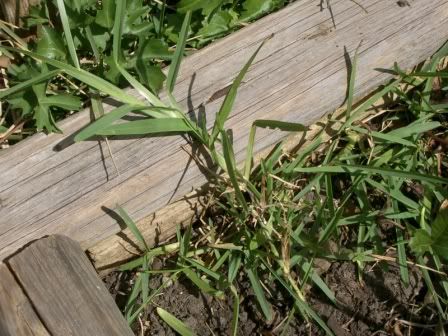
This coastal "carpet grass" is also a runner type grass.
If I could be as successful with it outside the beds as inside I would quit my day job.
Here is one that is nearly complete:

There are three types of grass that must be dealt with and all are a real pain.
First is the nut grass

It produces nodules underground and send up sprouts and side runners. If you get it on a good day, you can retrieve the nodules - otherwise you get the sprout and the "nut" remains underground until the next time.
I am a master nut grass grower.
My next grass nemesis is what I call centepede grass.

It is a slim and hardy grass that grows from a crown of roots and it sends out jointed runners on top of the ground. It is tough to get rid of and loves to come into the beds by growing between the joints at the corners.
The third type of grass is actually the one that I am trying to grow on the lawn - St. Augustine.

This coastal "carpet grass" is also a runner type grass.
If I could be as successful with it outside the beds as inside I would quit my day job.

